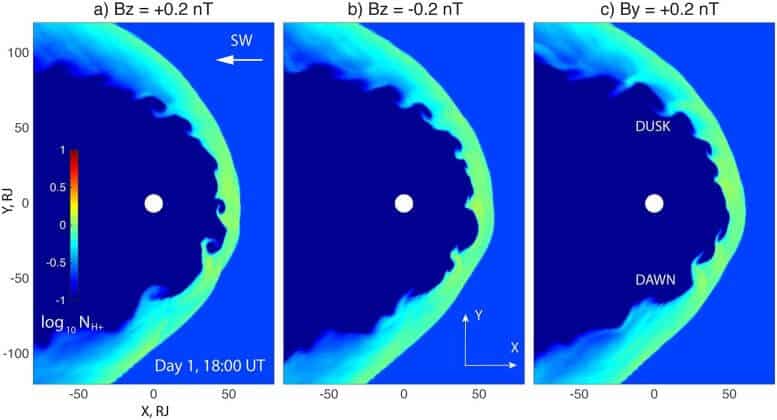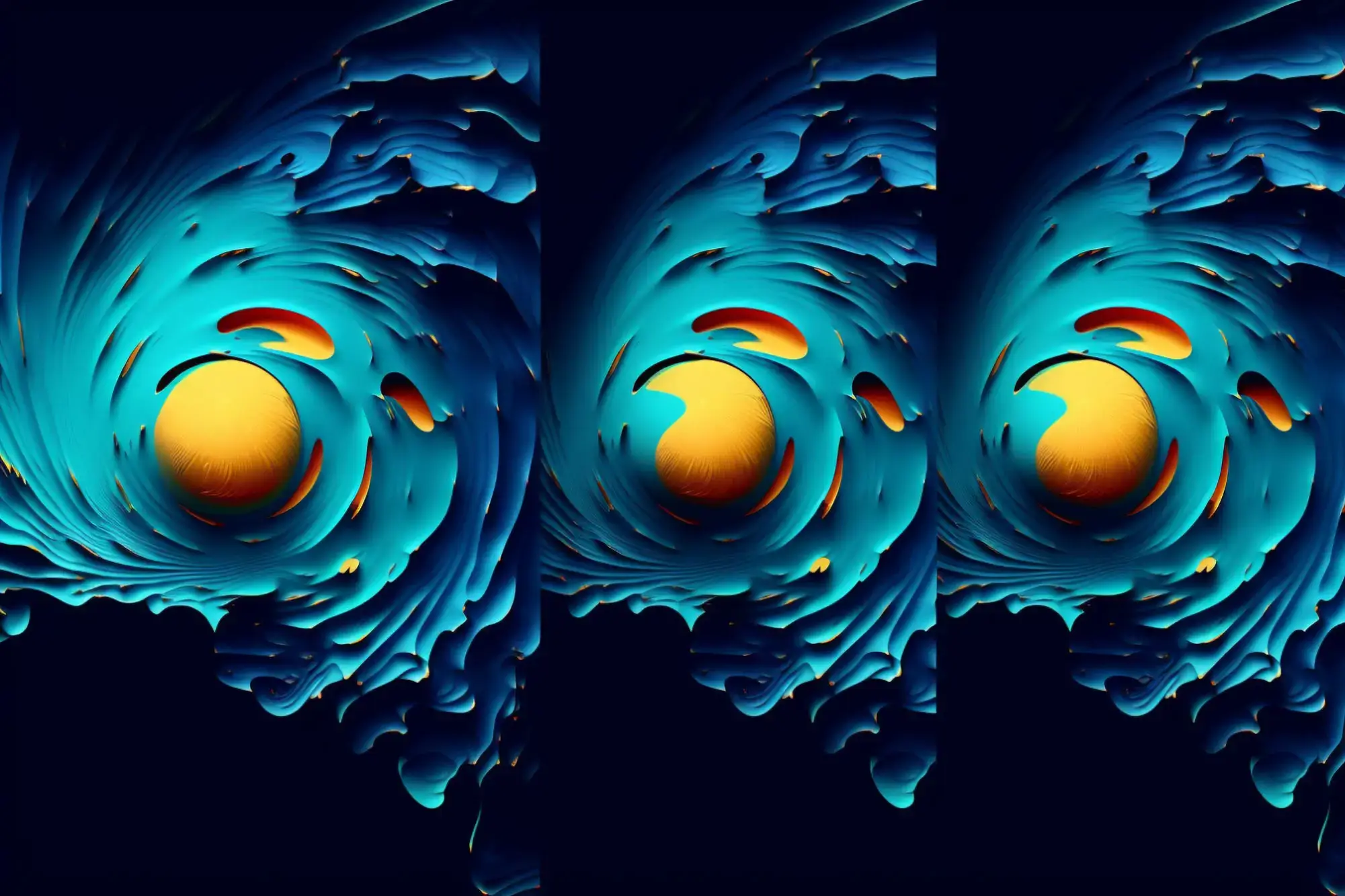Researchers have discovered that the Juno spacecraft often encounters giant swirling waves at the boundary between the solar wind and Jupiter's magnetosphere

A team led by the Southwest Research Institute (SwRI) and the University of Texas at San Antonio (UTSA) found that NASA's Juno spacecraft orbiting Jupiter often encounters giant swirling waves at the boundary between the solar wind and Jupiter's magnetosphere. The waves are an important process in transferring energy and mass from the solar wind, a stream of charged particles emitted from the sun, to the space environments of the planets.
These phenomena occur when there is a large difference in velocity at the boundary between two regions of space, notes Jake Montgomery, a doctoral student in the joint UTSA-SwRI space physics program. This can create a swirling wave, or vortex, at the interface that separates a planet's magnetic field from the solar wind, called the magnetopause. These Kelvin-Helmholtz waves are invisible without instruments but can be detected by instrument observations of plasma and magnetic fields in space. Plasma - an elementary state of matter consisting of charged particles, ions and electrons - is everywhere in space.

"Kelvin-Helmholtz instabilities are a fundamental physical process that occurs when there is interaction between solar and stellar winds and between the magnetic fields of planets in our solar system and throughout the universe," Montgomery said. "Juno has observed these waves in many of its orbits, providing conclusive evidence that Kelvin-Helmholtz instabilities play an active role in the interaction between the solar wind and Jupiter."
"The long time that Juno has been near Jupiter's magnetopause has allowed for detailed observations of phenomena such as Kelvin-Helmholtz instabilities in this region," said Dr. Robert Ebert, a scientist at SwRI who is also an adjunct professor at UTSA. "This interaction with the solar wind is important because it can transfer plasma and energy through the magnetopause into Jupiter's magnetosphere, causing activity within this system."
